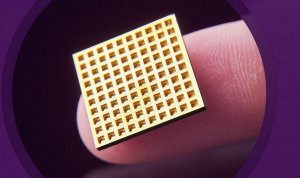
Single-chip
Unfortunately, the transportation of data across short electrical wires is rather limited. This comes as a result of the limitations of both bandwidth and power density, which creates a kind of “performance bottleneck” for semiconductor microchips in modern computer systems. This is an issue that exists in everything from mobile phones to large-scale data centers.
But these limitations can be overcome, and we may have just taken a great step towards doing just that.

In a new publication in Nature, a group of researchers detail the development of a highly integrated photonic system comprised of an IC that houses a processor, memory, and multiple optical transceivers on a single die.
Using their method, barriers that typically exists when trying to increase bandwidths of interchip data communications can be effectively addressed. Externally-generated laser light is used to illuminate the die where data is transmitted by using some of that light, modulating it and fusing the modulated light into a fiber.
In the publication, the team states the significance of their find: “Here we report an electronic–photonic system on a single chip integrating over 70 million transistors and 850 photonic components that work together to provide logic, memory, and interconnect functions.”
New System
This new system uses on-chip photonic devices, using light to directly communicate with other chips.
Integrating electronics and photonics at the scale of a microprocessor chip requires the adoption of a ‘zero-change’ approach to photonics. Which means that, instead of developing a custom process that could potentially complicate how the system works, optical devices are used through a standard microelectronics foundry process typically used for modern microprocessors.
The success of the demonstration of the new system could spur the production of chip-scale electronic-photonic systems that have the potential of transforming computing system architecture that could pave the way for more powerful computers and better network infrastructure.